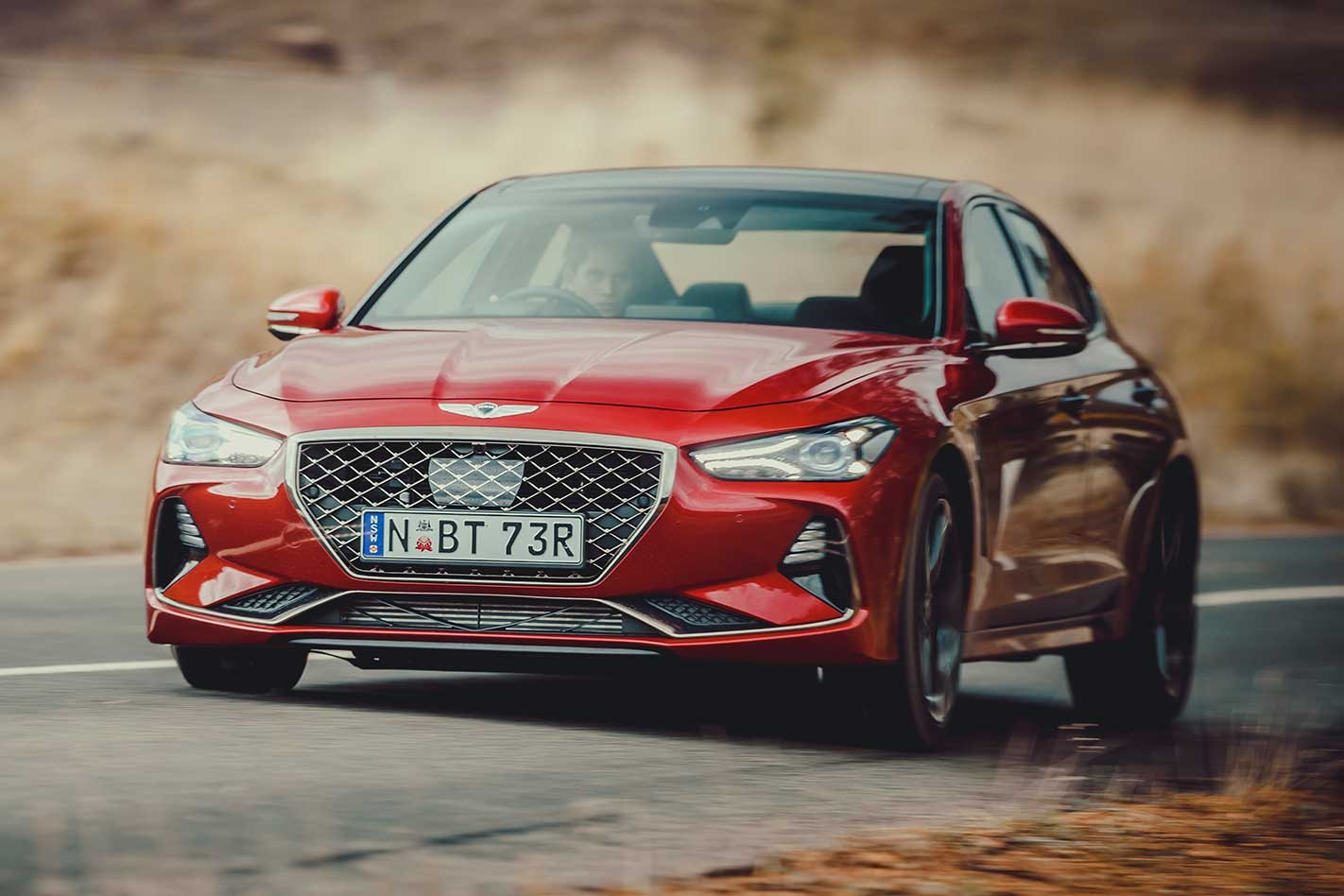When Hyundai declared it would unleash a 3-Series fighter with its luxury sub-brand, Genesis, we bet a few of you thought ho-hum. The Genesis G70 is years late to the game, at least in Australia. Plenty of it is shared with a Kia Stinger. And Hyundai is not the first to launch an attack on the established German marques.
Plus, Genesis has failed to land any solid hits since the nameplate appeared in 2008. So why should the new G70 strike fear into BMW, Mercedes-Benz and Audi, if at all? Well, that’s what we’re here to find out.
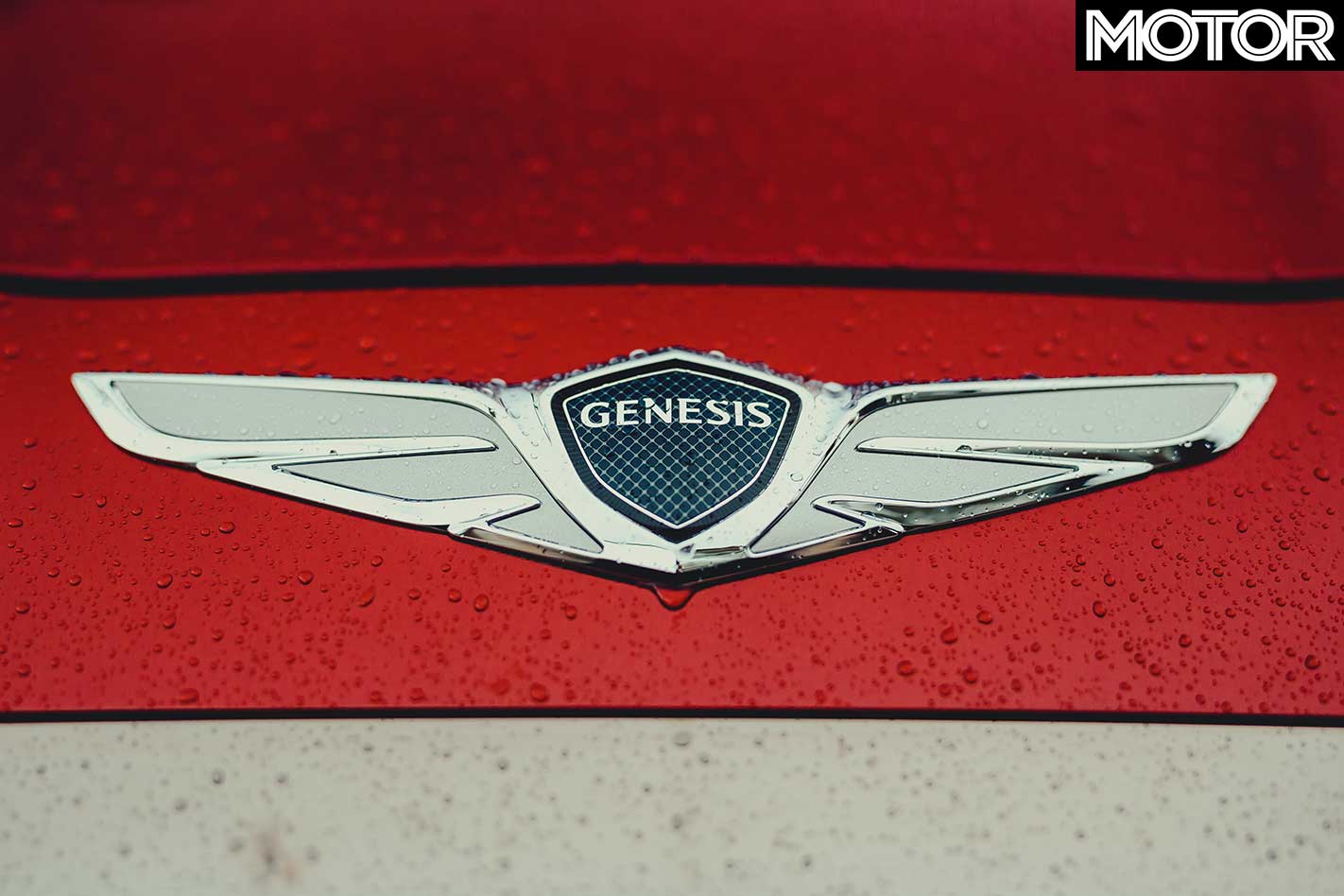
Biermann, who was once in charge of BMW M, oversaw chassis development. Lavlova brought colour and trim expertise from Mercedes-Benz. Audi alumni Schreyer waved his experienced pen over design. Fitzgerald, from Lamborghini, steers the ship.
Better yet, their involvement is sweetened by some ripe ingredients. Underneath, engineers installed strut front and multi-link rear suspension. It’s shared with a Kia Stinger but with a shorter wheelbase, 2905mm versus 2835mm.
Aussies miss out on all-wheel drive and a manual transmission, at least for now, so it will launch with a choice of two engines driving the rear axle through an eight-speed automatic – a turbocharged 2.0-litre inline-4 and a 3.3-litre twin-turbo V6. Today we’re in the six-banger.
Two low-mounted turbos plumb boost into a 60-degree block to make 272kW at 6000rpm and 510Nm at 1300-4500rpm. This helps add 115kg to the base four-cylinder’s kerb weight, for 1719kg in total, but it can still dispatch the 0-100km/h sprint in a claimed 4.7 seconds. You’d need an all-wheel drive Audi S model to match that, yet also a lot more money.
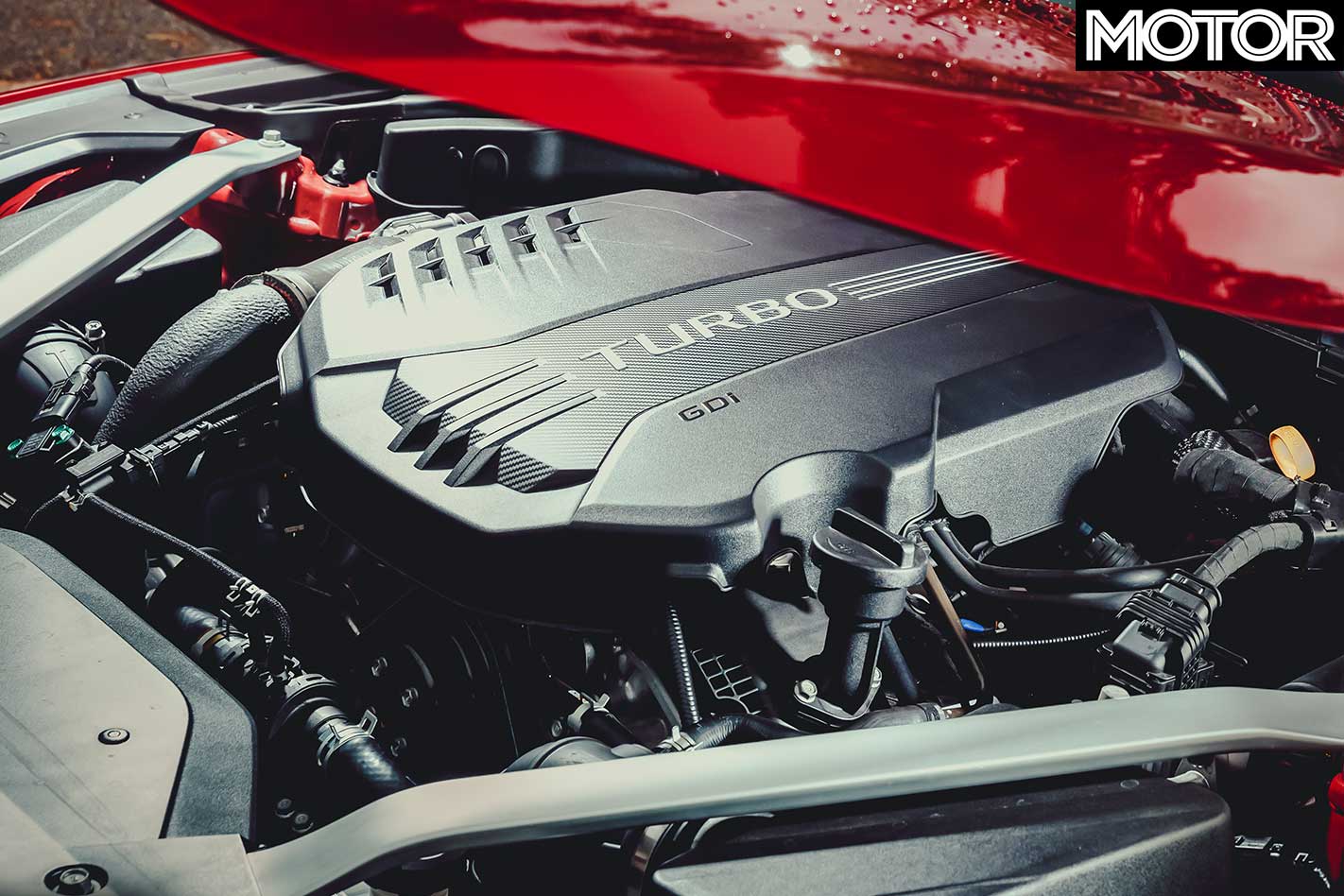
Before on-road costs and depending on grade, the six-cylinder charges between $72,450 and $79,950. Our Ultimate Sport sits at the top. It comes in an exclusive Havana Red, on unique five-spoke alloys, and welcomes you with cross-stitched Nappa-quilted leather seats. They’re gorgeous.
Adaptive dampers are exclusive to the 3.3T model, as is variable-ratio steering. But while big Brembos, a mechanical limited slip differential and 19-inch Michelin Pilot Sport 4 S rubber are limited to one grade on the 2.0-litre, they’re standard across the top Sport, Ultimate and Ultimate Sport grades in the 3.3-litre range.
Thumb its starter button and the engine wakes without much drama, quietly humming away under layers of leather and soundproofing. Pull the odd-looking gear lever down into Drive, then release. There’s also a launch-control function, so of course you’re going to try it.
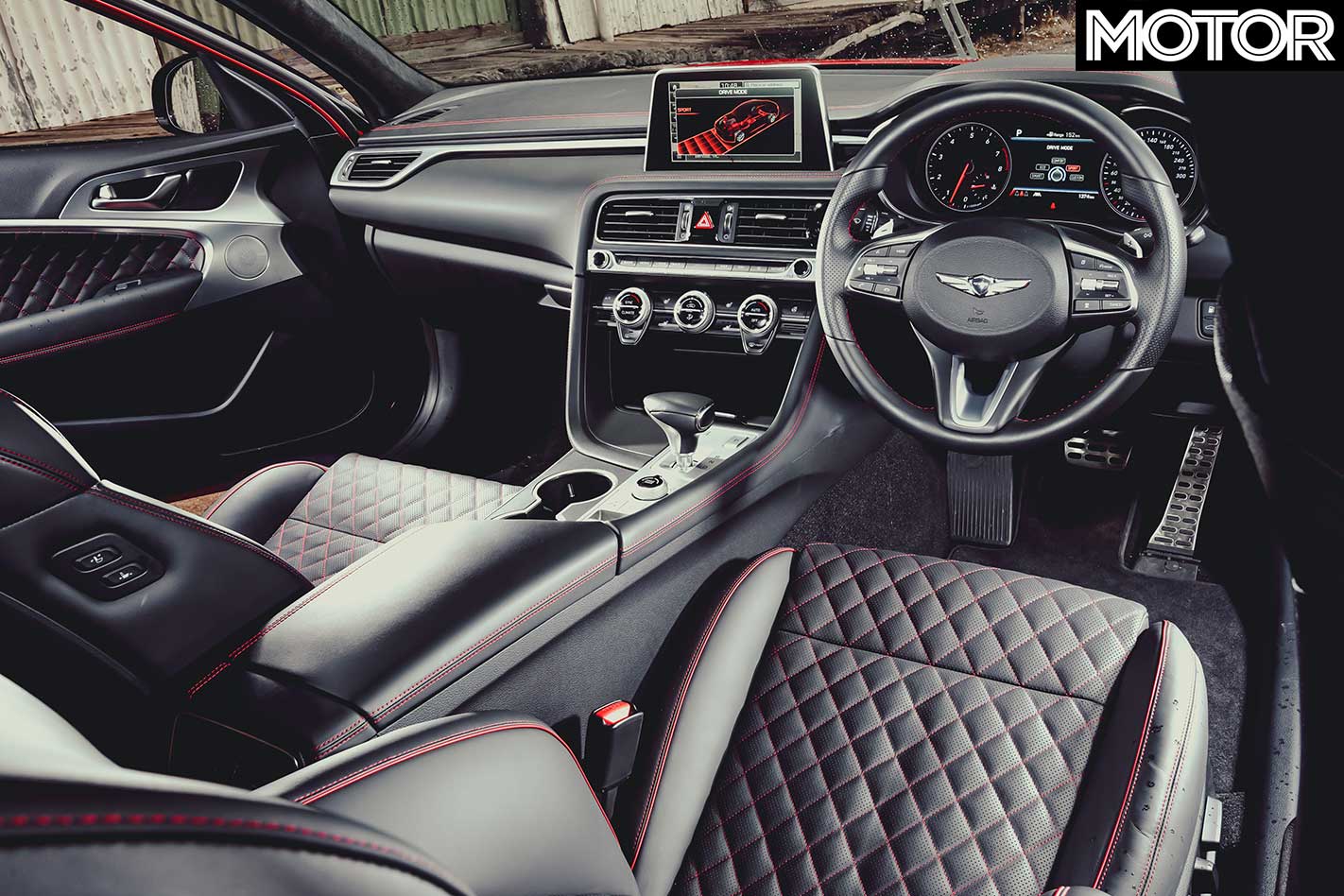
Stomp on the brake, in Sport, load the throttle and a chime rings to confirm it’s on. And at the 2100rpm stall a growl emerges from the engine bay. It’s remarkably undramatic when you release the brake. It surges forward and the rush of boost does little to upset the rear tyres.
The car feels effortlessly quick, which should come as no surprise given the engine is shared with the Stinger 330S yet the car sheds a full-grown rottweiler’s weight (in base form). It charges harder as speed builds and that growl expands into a full-bodied, if slightly artificial, roar. Against the clock, triple figures arrive in 4.92sec and the 400m mark passes after 13.15sec at 173.19km/h. It will also punch from 80-120km/h in 3.03sec.
It hauls down from 100km/h to rest in 36.29 metres at the other end of the strip. The brakes feel solid, too, even if we wish they would bite a little harder. They’re welcome on more winding roads where you need precise control of its weight.
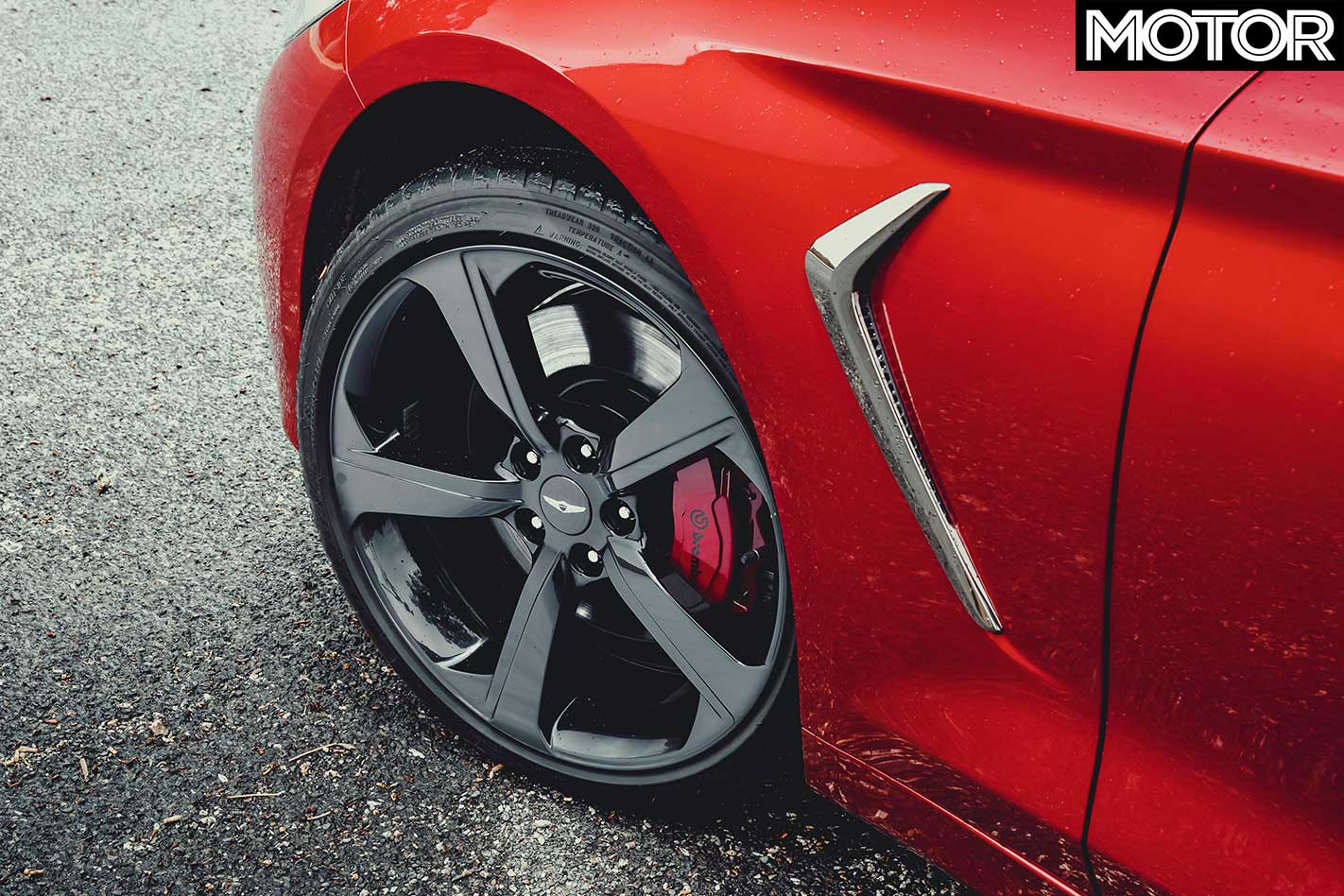
Despite the aluminium in its bones, the G70 is hefty. The new BMW 330i and current Mercedes C300 sedan are each more than 130kg lighter than the 2.0-litre G70. But this only makes the Australian chassis team’s work on its handling even more impressive.
As with the i30 N, they perfected the chassis for our cruddy roads, taking more than six months to cycle through different springs, roll bars, dampers and steering tunes. And yet its classic rear-drive dynamics feel like they’ve been honed for much longer because it’s a wonderfully balanced thing, despite a touch of push into corners.
The variable-gear steering feels fluid in weighting and action, and even in damp conditions it holds the road tenaciously. But what’s disappointing is that its fancy multi-link rear suspension can’t save it from sudden power oversteer, especially in damp conditions.
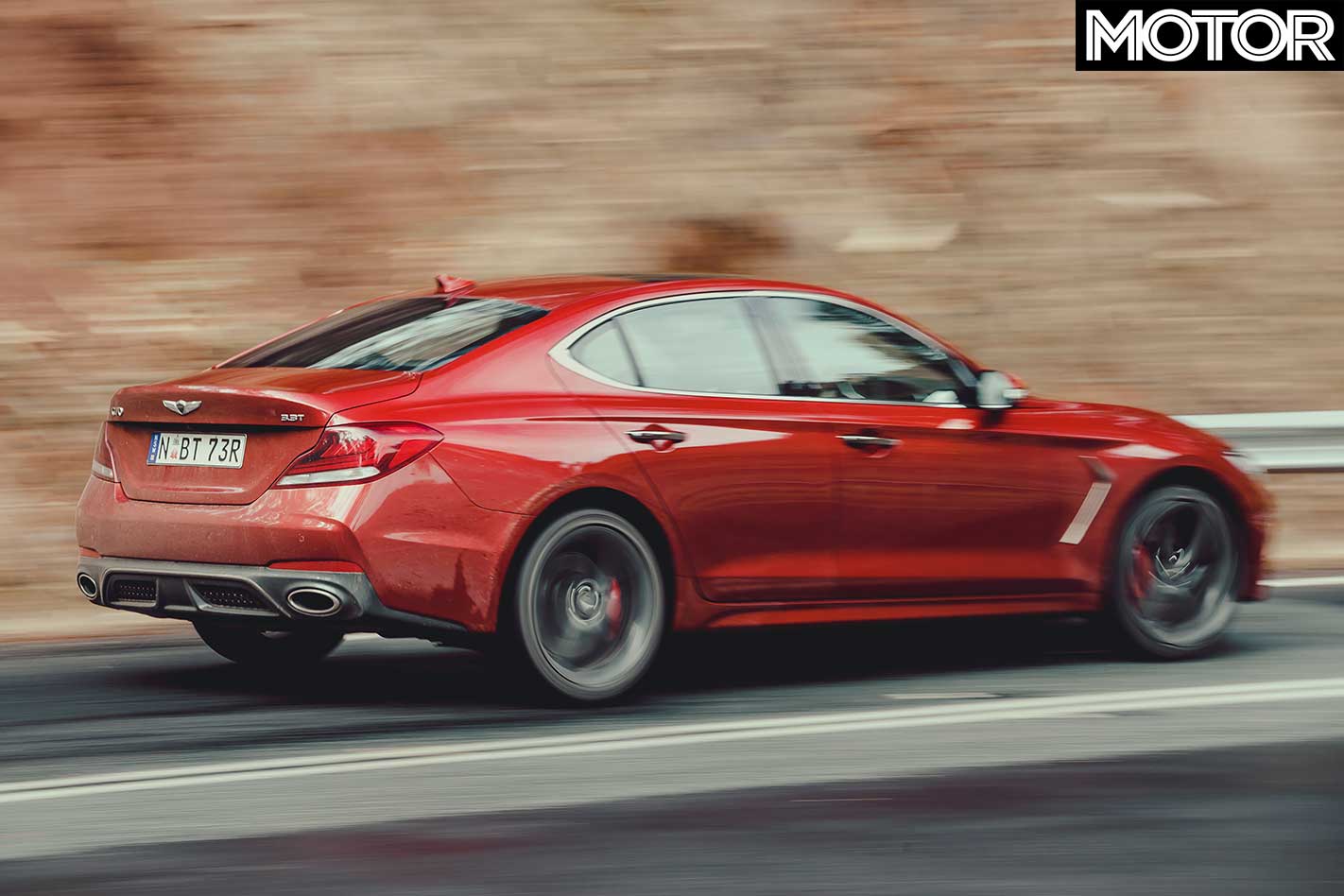
Ease on the throttle exiting a bend, as you wind back lock, and suddenly you’re sawing from right to left to keep it straight. It’s eerily similar to a Stinger V6’s behaviour, as if there’s no LSD at all.
This could be down to the inherent suppleness in the car’s set-up. It’s plain to see this is one of the best-riding cars under $100K. Really. Switch those two-mode adaptive dampers into Comfort through the dial on the console and it unlocks proper long-stroke absorbency. There’s even enough cushion in Sport mode when you’re attacking bumpy roads, helping to settle the car at corner entry and follow your selected path. Maybe Hyundai sacrificed rear roll stiffness to gain this supreme compliance and stability.
Sport mode offers performance pages on its cluster screen when you’re up it, with all engine vitals and real-time info on G-force put in view. The only technological fumble we find is with the transmission. It’s reluctant to stay in manual shifting and likes to hunt through ratios to settle on a nice fuel-sipping cog. It’s a shame because the paddles are genuinely nice to use.
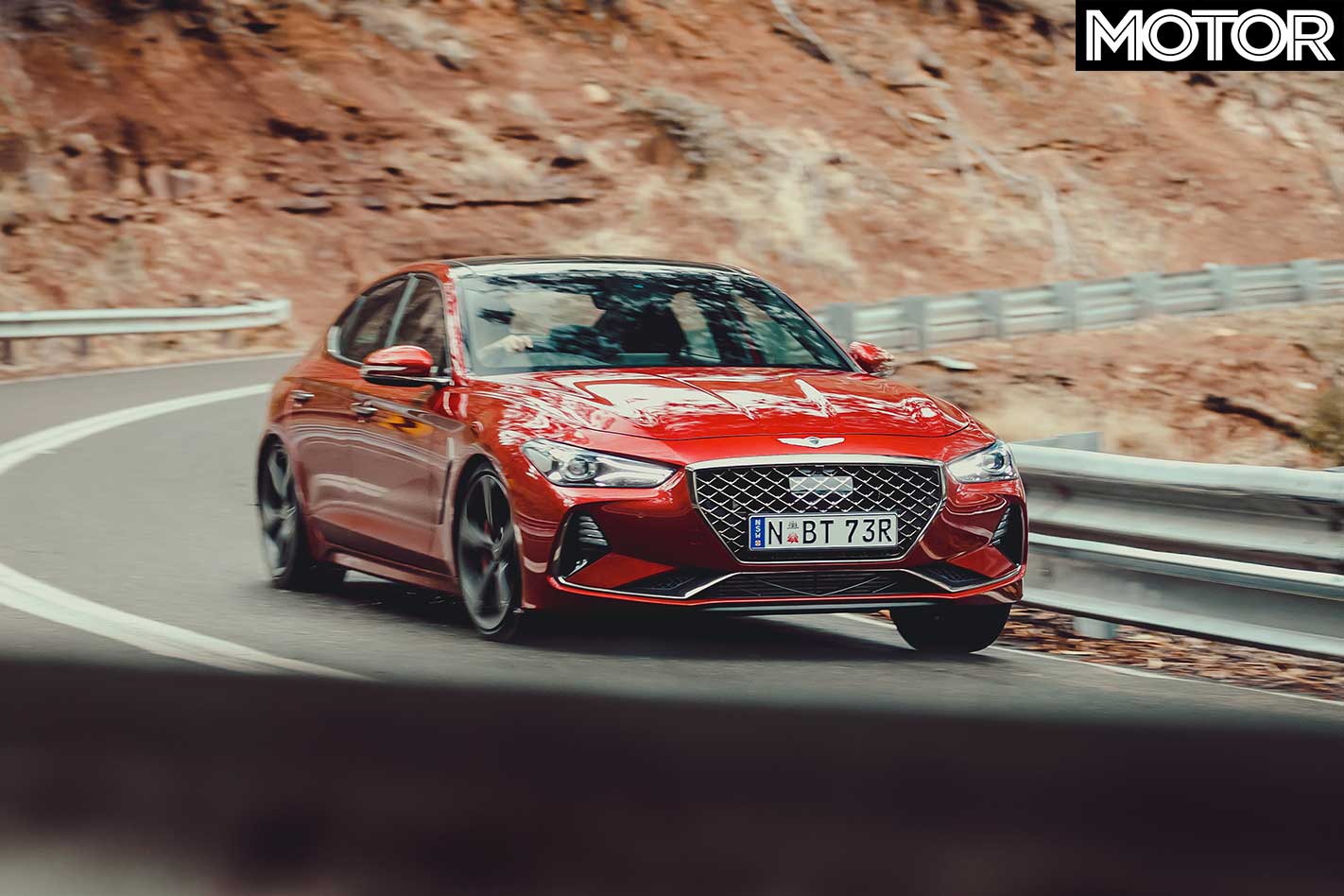
The clean, functional interior balances symmetry and driver-focused design. One nice feature is a cavernous storage compartment in the centre stack with a small bed to wirelessly charge your phone, while the steering wheel moulds to your palms and its button pads feel soft, matte and tactile underneath your fingers.
However, it’s only a matter of time before you recognise parts from cheaper models. The steering wheel’s rim design, for instance, is identical to a Stinger’s. The cluster design and infotainment screens? i30 N.
The graphics on the page where you select your drive mode? Stinger again. And the same goes for the lettered markings next to the gear lever. All of which makes us paranoid about the familiarity of some material finishes. Even though it definitely looks superior to its cousins’ cabins, sharing is the reality for an entry-level luxury car.
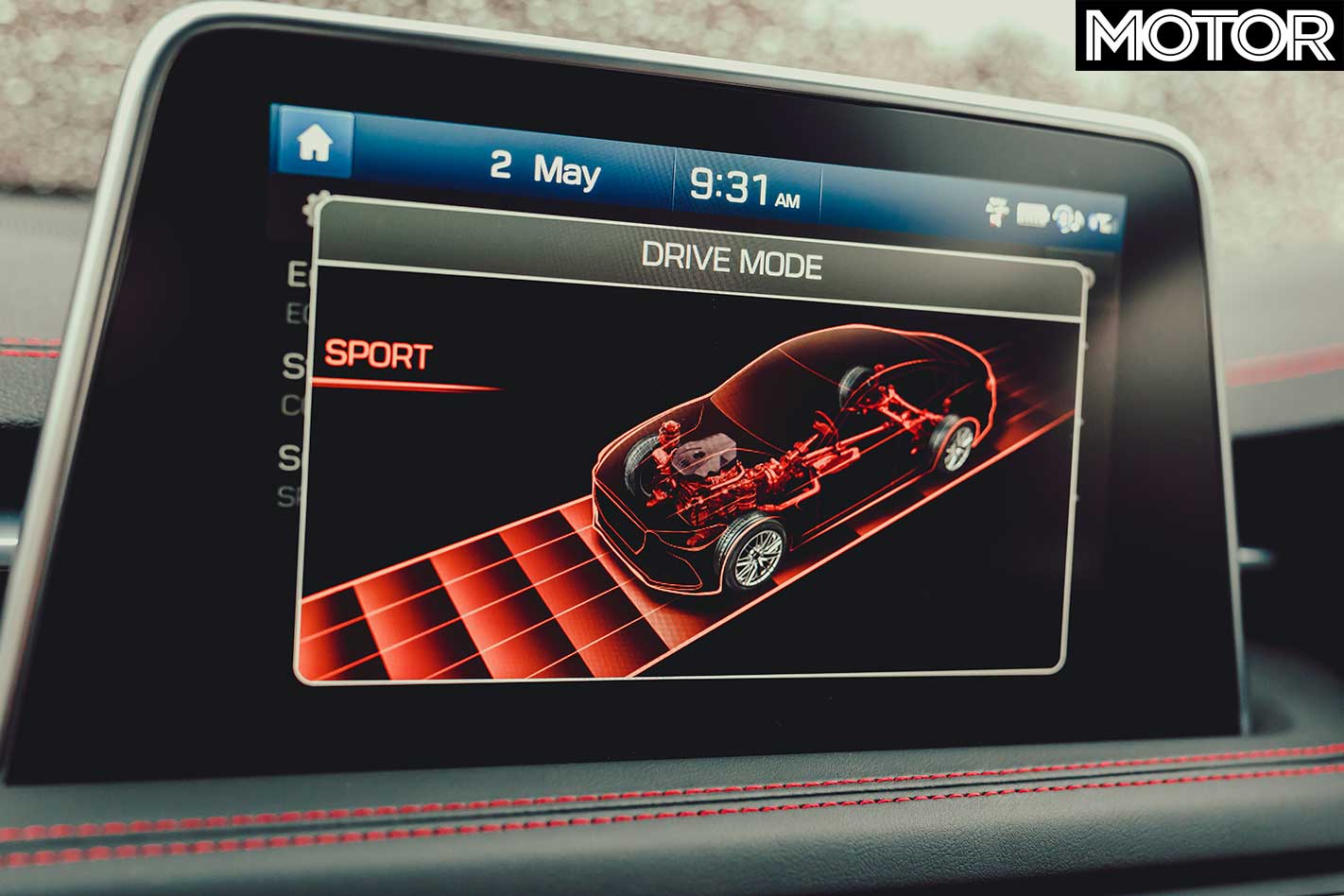
So, the G70 rides comfortably, handles tenaciously and goes like a proper twin-turbo rear-driver should. On top of that, it’s built solid, specified competitively and packs presence. Is that enough, though, in such a competitive class?
Before anything, Genesis stands in a long line of brands keen to stamp their mark in the luxury arena with a game-changing compact sedan. Just look at the Lexus IS 350 F-Sport, Jaguar XE R-Dynamic and Infiniti Q50 Red Sport.
The Red Sport steps forward as this car’s most natural rival. And, while they’re closely matched on straight-line performance, which is potent enough to challenge German sedans with proper performance badges, it’s the G70 that feels a generation ahead of the Infiniti on handling, ride and interior design. And although its sudden power oversteer is problematic, there’s something charming about the assumption you’re mature enough to handle its overpowered chassis.
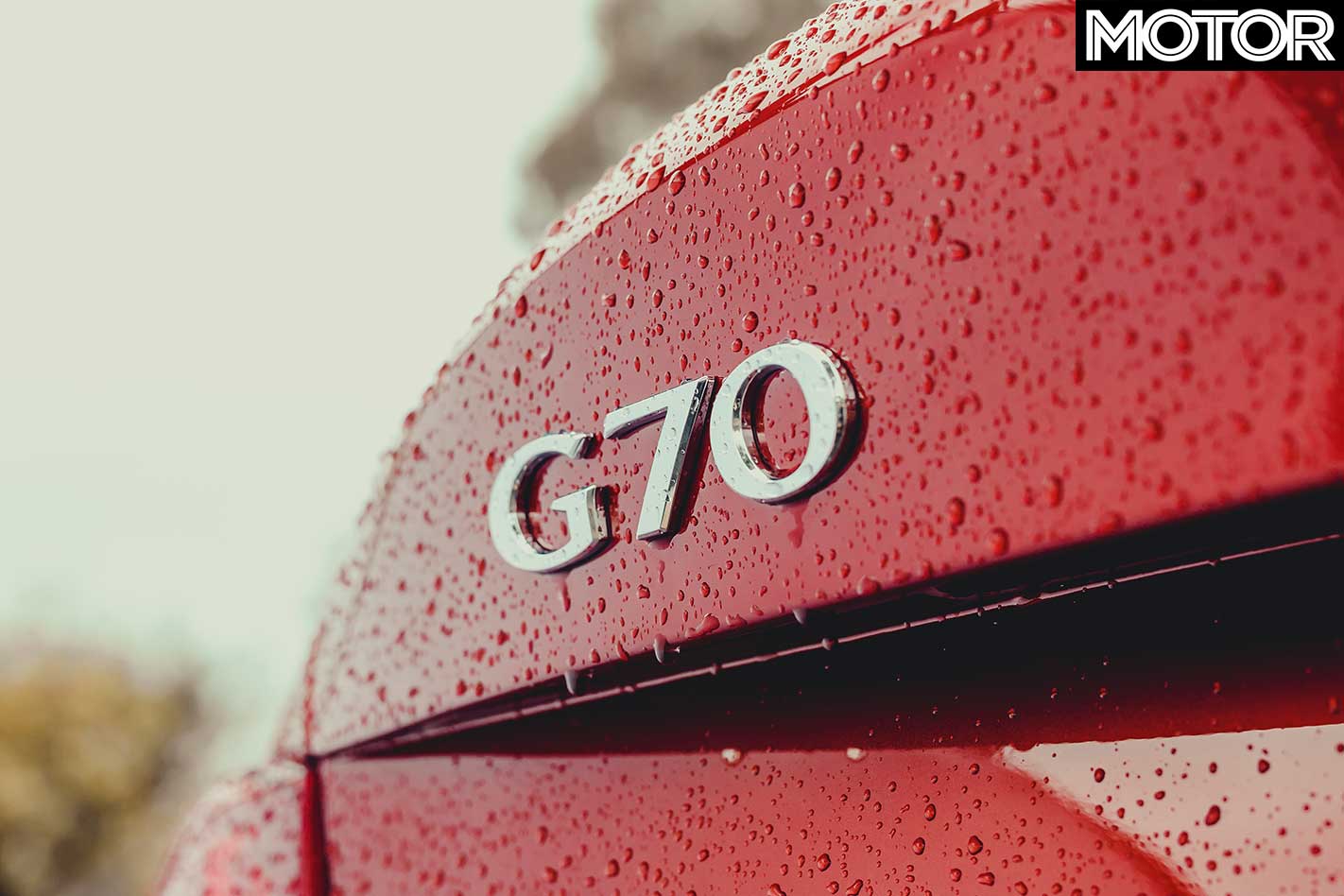
The Lexus wouldn’t treat you the same way. Jaguar would certainly be impressed with the G70’s ride and handling, and perhaps even irked by its nicely weighted controls, interior NVH and ergonomics. Meanwhile, the build quality is ahead of Alfa Romeo.
This car’s appeal lies in being a cut-price luxury sedan that goes like a rocket. Add a strong warranty and customer care package and it stacks up as the pragmatist’s choice. It feels more developed and refined than its relative, the $59,990 Kia Stinger GT, to justify the $11K premium. As it should.
Where the G70’s powers start to unravel is against established opposition. Hopping back into an A4, C-class or 3-Series exposes the inferiority of its smaller details. For instance, you notice its snatchy doorhandles and chintzy glasshouse trim, along with the lower resolution touchscreen and derivative exterior design. Nit-picking? You must in the luxury world.
Early adopters would go for the new 3-Series, while speed cravers might stump up for the all-paw (and pricier) AMG C43. Status seekers or designphiles will stay loyal to an A4. They all are safe for now. But bet on one thing: no-one will think ho-hum if Genesis makes BMW M, AMG or Audi RS its next target.
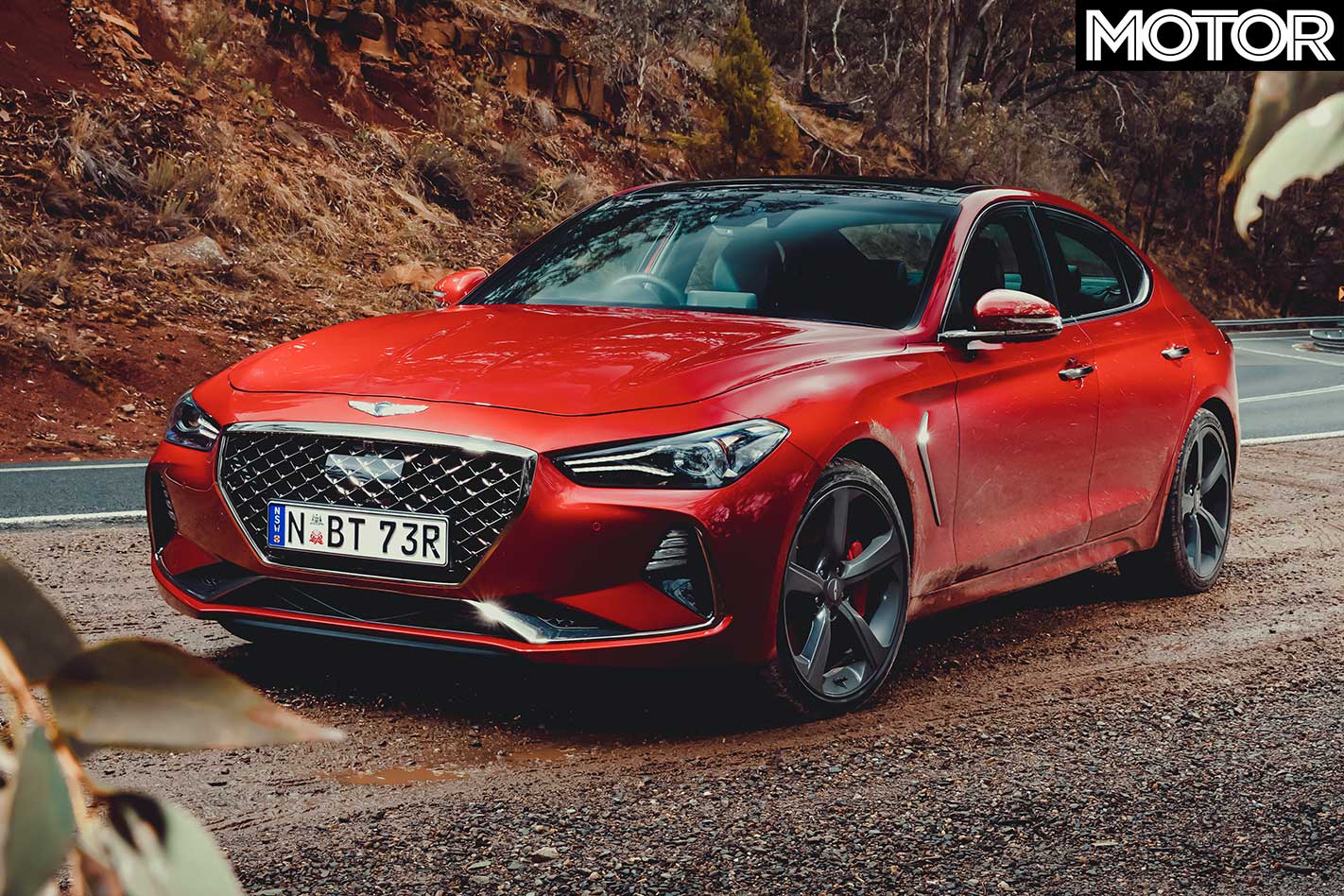
FAST FACTS 2019 Genesis G70 3.3T BODY: 4-door, 5-seat sedan DRIVE: rear-wheel ENGINE: 3342cc twin-turbo V6, DOHC, 24v BORE/STROKE: 92.0 x 83.8mm COMPRESSION: 10.0:1 POWER: 272kW @ 6000rpm TORQUE: 510Nm @ 1300-4500rpm WEIGHT: 1762kg POWER-TO- WEIGHT: 154kW/tonne TRANSMISSION: 8-speed automatic SUSPENSION: struts, coil springs, roll-bars, adaptive dampers (f); multi-links, coil springs, roll-bars, adaptive dampers (r) L/W/h: 4685/1850/1400mm WHEELBASE: 2835mm TRACKS: 1596/1604mm (f/r) STEERING: electrically assisted rack-and-pinion BRAKES: 350mm ventilated discs, four-piston calipers (f); 340mm ventilated discs, two-piston calipers (r) WHEELS: 19 x 8.0-inch (f); 19 x 8.5-inch (r) TYRES: Michelin Pilot Sport 4; 225/40 R19 95Y XL (f), 255/35 ZR19 96Y XL (r) PRICE: $79,950
PROS: Class-leading ride, feel of controls, stonking engine CONS: On-limit traction, perceived quality, weak noise RATING: 4 out of 5 stars
The Strip
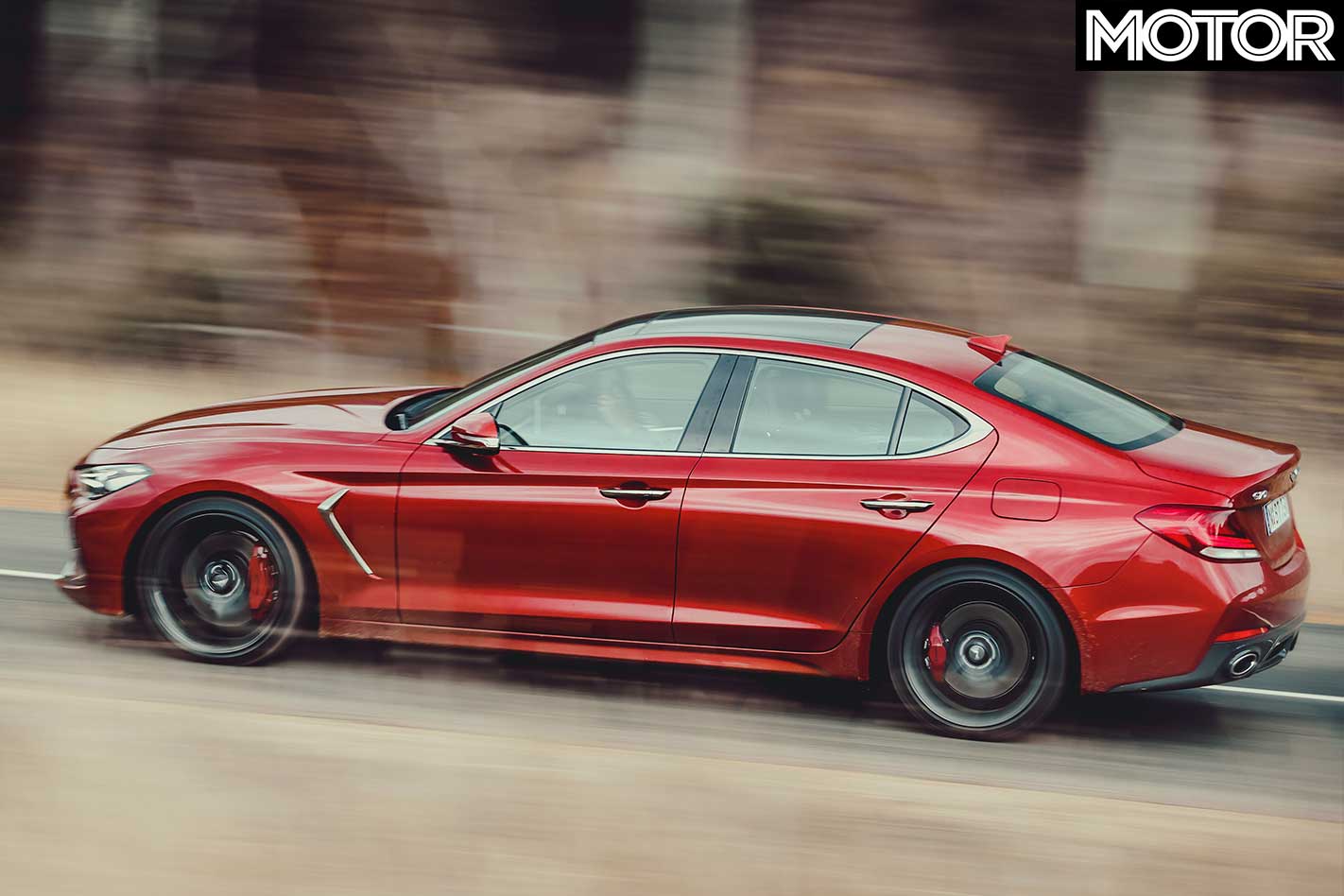
| Genesis G70 3.3T | |
| 0-10km/h | 0.32sec |
| 0-20km/h | 0.79sec |
| 0-30km/h | 1.21sec |
| 0-40km/h | 1.59sec |
| 0-50km/h | 1.98sec |
| 0-60km/h | 2.50sec |
| 0-70km/h | 3.00sec |
| 0-80km/h | 3.53sec |
| 0-90km/h | 4.21sec |
| 0-100km/h | 4.92sec |
| 0-110km/h | 5.71sec |
| 0-120km/h | 6.56sec |
| 0-130km/h | 7.47sec |
| 0-140km/h | 8.61sec |
| 0-150km/h | 9.86sec |
| 0-160km/h | 11.19sec |
| 0-170km/h | 12.65sec |
| 0-400m | 13.15sec @ 173.19km/h |
| 80-120km/h (Drive) | 3.03sec |
| 100-0km/h | 36.29m |
| Speed in gears | |
| 1st | 65km/h @ 6500rpm |
| 2nd | 99km/h @ 6500rpm |
| 3rd | 148km/h @ 6500rpm |
| 4th | 200km/h @ 6500rpm |
| 5th | 238km/h @ 6500rpm* |
| 6th | 270km/h @ 6090rpm* |
| 7th | 270km/h @ 4740rpm* |
| 8th | 270km/hu00a0@ 4100rpm* |
Winton Raceway, 15˚C, dry. Driver: Louis Cordony Timing: VBOX Australia *Manufacturer’s claim


